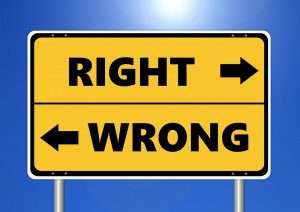What is the Difference Between Protocols and Policies?

In any organization, protocols and policies are essential to maintaining order, ensuring compliance, and fostering collaboration. However, the difference between protocols and policies is often misunderstood or overlooked. In this article, we will define protocols and policies, explore their importance, highlight key differences, and provide examples of their application in various industries to answer the question: what is the difference between protocols and policies?
Defining Protocols and Policies

employment policies
Let’s start by defining protocols and policies. Specifically what are protocols and what are policies.
What are Protocols?
Protocols are a set of rules or guidelines that dictate how tasks are performed or how communication takes place in an organization. They are usually specific to a particular process or department, and they outline the steps or procedures that should be followed to ensure consistency and efficiency.
Having protocols in place can be essential for organizations that require a high level of precision and attention to detail. In the healthcare industry, for example, protocols can be a matter of life and death. In emergency situations, doctors and nurses need to be able to rely on established protocols to guide them through complex procedures quickly and efficiently.
Protocols can also be useful in situations where there is a high turnover of staff. By having clear protocols in place, new employees can quickly get up to speed with the organization’s ways of working, reducing the risk of errors or misunderstandings.
For instance, in a hospital, there might be protocols for admitting patients, conducting surgeries, or dispensing medication. These protocols would set out the order of tasks, the necessary documentation, and the communication channels required to ensure that patients receive appropriate care.
What are Policies?
Policies, on the other hand, are broader guidelines that set out the rules and expectations for behavior within an organization. They are usually more far-reaching, covering multiple departments or processes, and they often relate to compliance, security, or ethical issues.
Having well-defined policies can be crucial for organizations that need to comply with legal and regulatory requirements. For example, financial institutions need to have policies in place to ensure that they are complying with anti-money laundering regulations.
Policies can also be used to promote a positive organizational culture. By setting out clear expectations for behavior, organizations can create a sense of shared values and purpose among employees. This can lead to increased job satisfaction, higher levels of engagement, and better performance.
For example, a company might have policies on data protection, sexual harassment, or social media use. These policies would outline the principles, standards, and consequences that apply to all employees, regardless of their role or function.
Overall, protocols and policies are essential tools for organizations looking to operate efficiently, comply with regulations, and promote a positive organizational culture. By establishing clear guidelines and procedures, organizations can reduce the risk of errors, promote consistency, and create a sense of shared purpose among employees.
Importance of Protocols and Policies in Organizations
Protocols and policies are essential components of any well-functioning organization. They provide a framework for order and consistency, ensuring that everyone knows what is expected of them.
This, in turn, allows tasks to be performed more efficiently and effectively, reducing the risk of errors, delays, or miscommunications. However, the importance of protocols and policies goes beyond just establishing order and consistency.
Establishing Order and Consistency
Protocols and policies are critical in establishing order and consistency in an organization. By defining the rules and guidelines for behavior, they ensure that everyone is on the same page. This helps to maintain a high standard of performance, which is essential for the success of any organization. It also helps to create a culture of accountability and responsibility, where everyone is aware of their role and responsibilities.
Ensuring Compliance and Security
Protocols and policies also play a vital role in ensuring compliance with regulations and laws. By setting out the standards for behavior, they help organizations to meet legal and ethical obligations. This protects against fines, lawsuits, or reputational damage. In addition, they help to maintain security by setting out guidelines for data protection, access control, and risk management. This ensures that sensitive information is protected and that the organization is prepared for any potential threats.
Facilitating Communication and Collaboration
Finally, protocols and policies facilitate communication and collaboration within an organization. By setting out the channels and expectations for communication, they ensure that information is shared effectively and efficiently.
This creates a culture of transparency and trust, where everyone is encouraged to share their ideas and thoughts. It also enables teams to work together more effectively towards common goals, leading to increased productivity and better outcomes.
They also help to ensure compliance with regulations and laws, maintain security, and facilitate communication and collaboration. By implementing protocols and policies, organizations can create a culture of accountability, responsibility, and transparency, leading to increased productivity and better outcomes.
Key Differences Between Protocols and Policies
The key difference between protocols and policies is their purpose and scope, flexibility and rigidity, and enforcement and consequences. Protocols and policies are essential components of any organization. They provide a framework for order and consistency, ensuring that everyone knows what is expected of them in the workplace.
Purpose and Scope
The key difference between protocols and policies is their purpose and scope. Protocols are focused on specific tasks or processes, and they provide detailed guidelines for how these tasks should be performed.
For example, a protocol may outline the steps that should be taken when responding to a security breach or handling sensitive customer information. These protocols are designed to ensure that these tasks are performed consistently and efficiently, reducing the risk of errors or oversights.
Policies, on the other hand, are broader in scope, and they cover a range of issues that are relevant to the organization as a whole. They may address topics such as workplace conduct, employee benefits, or environmental sustainability. Policies are often developed to ensure that the organization complies with legal or regulatory requirements, but they may also reflect the organization’s values or priorities.
Flexibility and Rigidity
Protocols tend to be more rigid than policies, as they are designed to ensure consistency and efficiency in specific processes. They are less flexible and adaptable than policies, which can be updated or revised more easily in response to changing circumstances or new information.
For example, a protocol for handling customer complaints may be very specific about the steps that should be taken, but it may not be able to accommodate new types of complaints or emerging issues. A policy on the other hand, may be more flexible and adaptable, allowing the organization to respond to changing circumstances.
However, the rigidity of protocols can also be an advantage in certain situations. For tasks that require a high degree of accuracy or precision, a protocol can provide clear guidance and reduce the risk of errors. Protocols may also be useful in situations where there is a high degree of risk or uncertainty, as they provide a clear framework for decision-making.
Enforcement and Consequences
Policies tend to have more explicit consequences for non-compliance than protocols, as they are focused on behavior rather than performance. Violating a policy can often result in disciplinary action or even termination, whereas violating a protocol is more likely to result in retraining or a review of the process.
For example, a policy on workplace harassment may outline the consequences for employees who engage in such behavior, while a protocol for handling customer complaints may focus on ensuring that the process is followed correctly.
However, the consequences for violating a protocol can still be significant. In some cases, a failure to follow a protocol can result in serious consequences, such as a safety incident or a data breach. In these cases, the organization may need to take more serious action, such as terminating an employee or implementing new protocols to prevent similar incidents from occurring in the future.
Examples of Protocols and Policies in Various Industries
There are many examples of protocols and policies in various industries. Let’s look at a some from the healthcare industry, information technology industry, and the education sector.
Healthcare Industry
In the healthcare industry, protocols are essential to ensuring patient safety and efficient care. For example, there might be protocols for admitting patients, dispensing medication, or conducting procedures such as X-rays or MRIs.
These protocols are developed by medical professionals and are constantly reviewed and updated to reflect the latest research and best practices. In addition to protocols, healthcare organizations have policies on issues such as patient privacy, ethics, and infection control. These policies are designed to protect both patients and healthcare workers, and are enforced through ongoing training and regular audits.
For example, a policy on patient privacy might require that all medical records be kept confidential and that only authorized personnel have access to them. This policy would be enforced through strict access controls and regular monitoring of electronic medical records. Similarly, a policy on infection control might require that all healthcare workers receive regular vaccinations and follow strict hand hygiene protocols to prevent the spread of disease.
Information Technology Industry
In the information technology industry, protocols are used to ensure that systems and applications are developed and maintained consistently and efficiently. For example, there might be protocols for software development, network architecture, or data backup and recovery. These protocols are developed by IT professionals and are designed to ensure that all systems and applications are secure, reliable, and meet the needs of the organization.
Information technology organizations also have policies on issues such as data protection, cybersecurity, and social engineering. These policies are designed to protect the organization from cyber threats, data breaches, and other security risks.
For example, a policy on data protection might require that all sensitive data be encrypted and stored on secure servers, with access restricted to authorized personnel only. Similarly, a policy on cybersecurity might require that all employees receive regular training on how to identify and report potential security threats.
Education Sector
In the education sector, protocols are used to ensure that teaching and learning are effective and efficient. For example, there might be protocols for lesson planning, assessment, or behavioral management. These protocols are developed by educators and are designed to ensure that all students receive a high-quality education that meets their individual needs.
Education organizations also have policies on issues such as student welfare, anti-bullying, and academic integrity. These policies are designed to create a safe and supportive learning environment for all students. For example, a policy on student welfare might require that all staff members receive training on how to identify and report signs of abuse or neglect. Similarly, a policy on academic integrity might require that all students sign an honor code that prohibits cheating and plagiarism.
Difference Between Protocols and Policies
Protocols and policies are essential to maintaining order, ensuring compliance, and fostering collaboration in organizations. While they share some similarities, they are distinct in their purpose, scope, and enforcement. By understanding the difference between protocols and policies, organizations can develop effective frameworks for success and create a culture of excellence.
















Leave a Reply